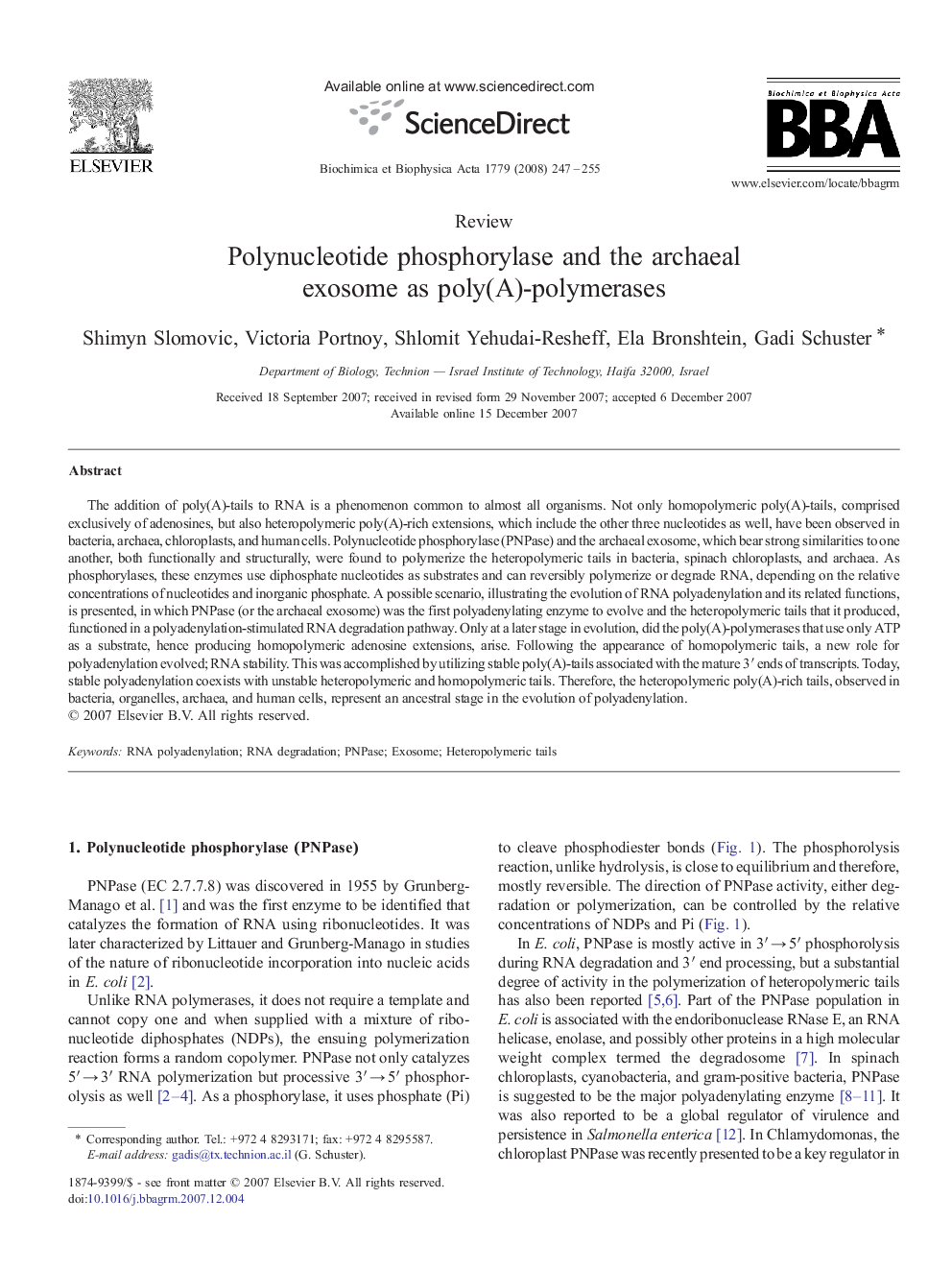| کد مقاله | کد نشریه | سال انتشار | مقاله انگلیسی | نسخه تمام متن |
|---|---|---|---|---|
| 10799300 | 1054286 | 2008 | 9 صفحه PDF | دانلود رایگان |
عنوان انگلیسی مقاله ISI
Polynucleotide phosphorylase and the archaeal exosome as poly(A)-polymerases
دانلود مقاله + سفارش ترجمه
دانلود مقاله ISI انگلیسی
رایگان برای ایرانیان
موضوعات مرتبط
علوم زیستی و بیوفناوری
بیوشیمی، ژنتیک و زیست شناسی مولکولی
زیست شیمی
پیش نمایش صفحه اول مقاله

چکیده انگلیسی
The addition of poly(A)-tails to RNA is a phenomenon common to almost all organisms. Not only homopolymeric poly(A)-tails, comprised exclusively of adenosines, but also heteropolymeric poly(A)-rich extensions, which include the other three nucleotides as well, have been observed in bacteria, archaea, chloroplasts, and human cells. Polynucleotide phosphorylase (PNPase) and the archaeal exosome, which bear strong similarities to one another, both functionally and structurally, were found to polymerize the heteropolymeric tails in bacteria, spinach chloroplasts, and archaea. As phosphorylases, these enzymes use diphosphate nucleotides as substrates and can reversibly polymerize or degrade RNA, depending on the relative concentrations of nucleotides and inorganic phosphate. A possible scenario, illustrating the evolution of RNA polyadenylation and its related functions, is presented, in which PNPase (or the archaeal exosome) was the first polyadenylating enzyme to evolve and the heteropolymeric tails that it produced, functioned in a polyadenylation-stimulated RNA degradation pathway. Only at a later stage in evolution, did the poly(A)-polymerases that use only ATP as a substrate, hence producing homopolymeric adenosine extensions, arise. Following the appearance of homopolymeric tails, a new role for polyadenylation evolved; RNA stability. This was accomplished by utilizing stable poly(A)-tails associated with the mature 3â² ends of transcripts. Today, stable polyadenylation coexists with unstable heteropolymeric and homopolymeric tails. Therefore, the heteropolymeric poly(A)-rich tails, observed in bacteria, organelles, archaea, and human cells, represent an ancestral stage in the evolution of polyadenylation.
ناشر
Database: Elsevier - ScienceDirect (ساینس دایرکت)
Journal: Biochimica et Biophysica Acta (BBA) - Gene Regulatory Mechanisms - Volume 1779, Issue 4, April 2008, Pages 247-255
Journal: Biochimica et Biophysica Acta (BBA) - Gene Regulatory Mechanisms - Volume 1779, Issue 4, April 2008, Pages 247-255
نویسندگان
Shimyn Slomovic, Victoria Portnoy, Shlomit Yehudai-Resheff, Ela Bronshtein, Gadi Schuster,